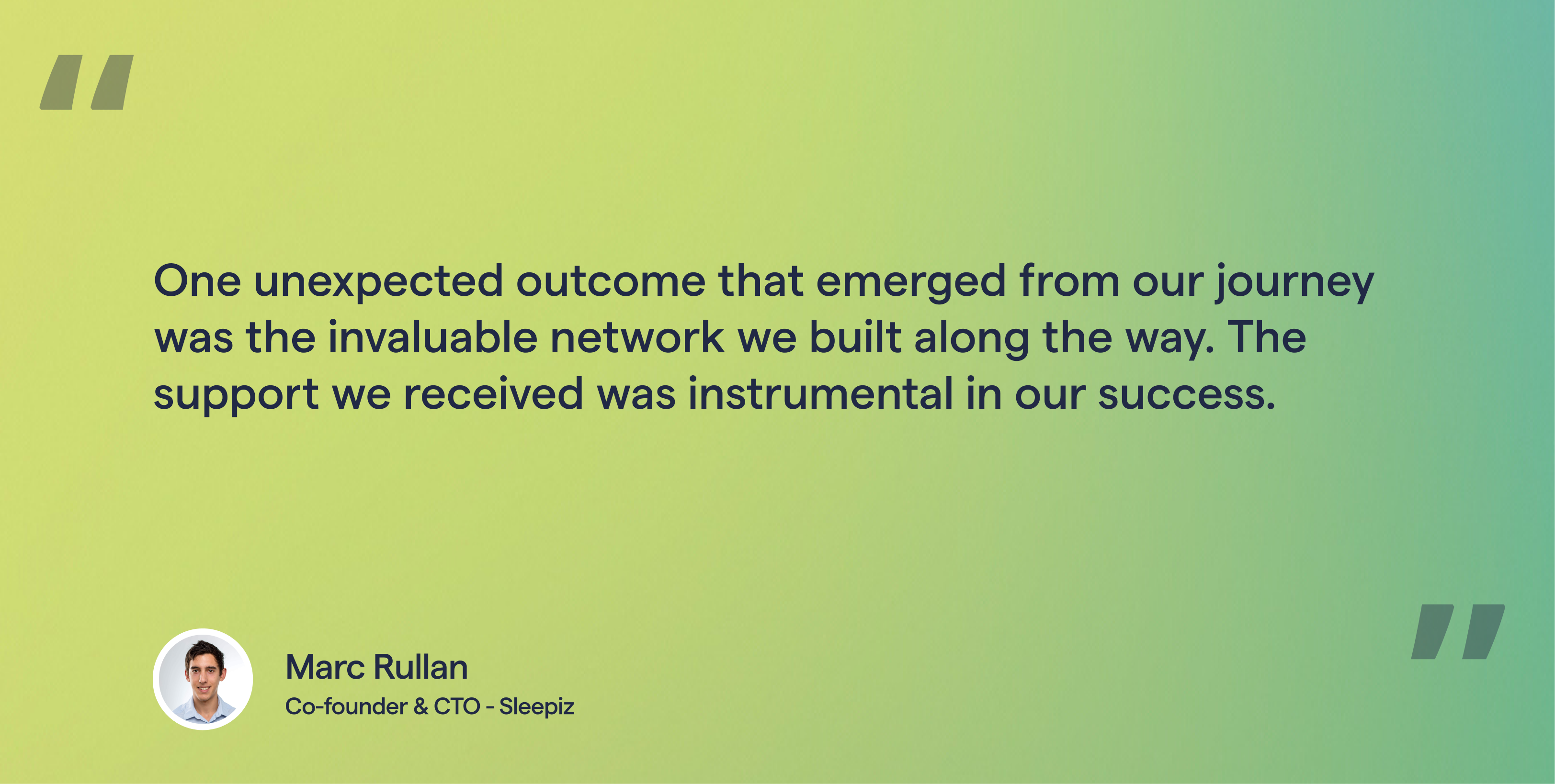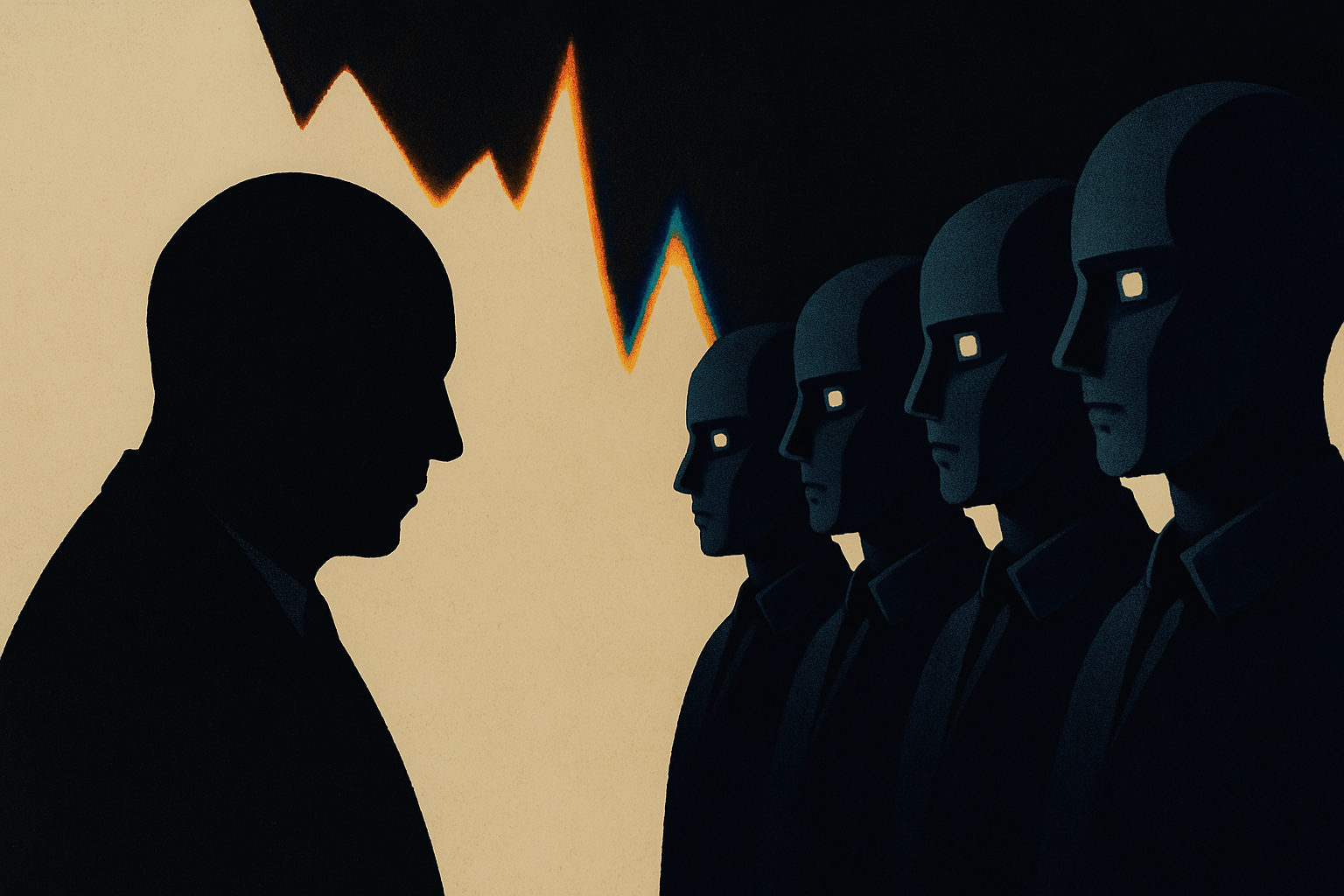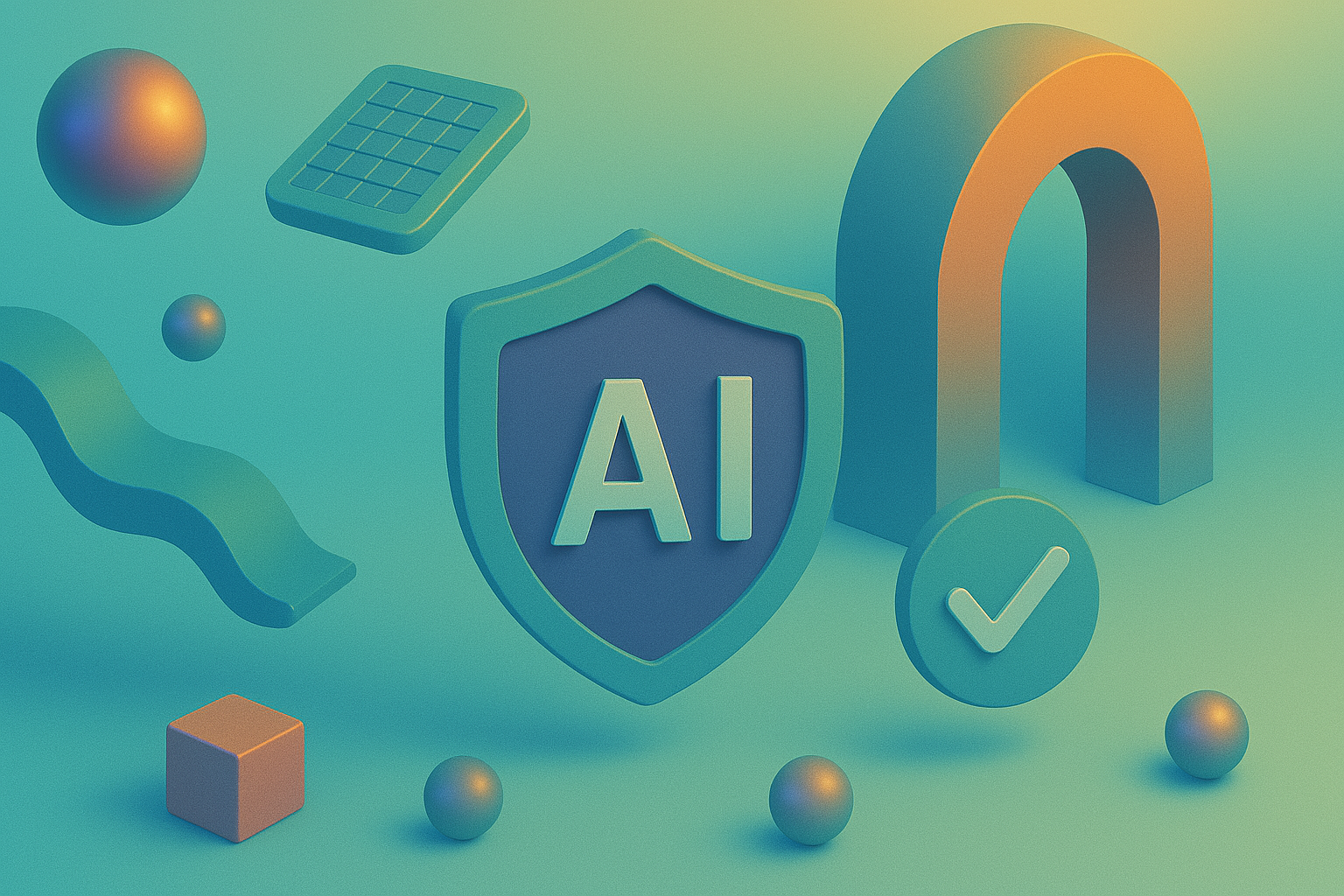Article

From Academia to Healthcare Innovation: An Interview with Marc Rullan, Co-founder and CTO of Sleepiz
In the realm of healthcare technology, where continuous innovation reshapes the way we approach medical diagnostics and patient care, we have the privilege of speaking with Marc Rullan, the Chief Technology Officer at Sleepiz. Marc’s journey is marked by a relentless drive to bridge the gap between cutting-edge university research and its tangible benefits for society.
Sleepiz is a Zurich-based startup with a mission to provide patient-centric disease management through the seamless integration of contactless monitoring into people’s homes. In this enlightening interview, Marc shares his journey from pursuing a PhD in Control Theory and Systems Biology to co-founding Sleepiz and leading its technological advancements.
Join us as we delve into Marc’s insights on the intersection of healthcare and technology, the challenges and opportunities in developing a medical hardware product, and Sleepiz’s vision for the future of remote patient monitoring and digital health.
1. Can you start by introducing yourself and explaining your role as the CTO of Sleepiz? What motivated you to join Sleepiz and work on this healthcare innovation?
Thank you for having me! My name is Marc Rullan, and I’m one of the co-founders and the Chief Technology Officer at Sleepiz. As the CTO, my responsibilities range from the formulation of a technology strategic roadmap for the company, to the daily management of our data science team.
My journey with Sleepiz began in 2017. During that period, I was pursuing my PhD in Control Theory and Systems Biology. While this field wasn’t directly aligned with Sleepiz’s eventual focus, it equipped me with the technical expertise necessary for our work.
What motivates me is to bring high-tech and innovation to the public. I’m driven by the prospect of finding ways to take the remarkable research occurring in universities and other institutions and translating it into products that can benefit society today.

2. Sleepiz is focused on enabling the medical community to bring healthcare into the home environment. Could you elaborate on Sleepiz’s solutions and the idea behind the company?
Certainly, at Sleepiz we believe in placing patients’ needs and wants at the centre when designing our products and services. That’s why our first product, the Sleepiz One+, is designed to be used at the comfort of the patient’s homes, and requires no contact. The idea behind this product originated from our CEO, Dr. Soumya Dash, who was pursuing a PhD in wireless communications at the time. He introduced me to the concept of using radar technology to non-invasively monitor individuals’ health. This concept forms the core of the technology we employ at Sleepiz.
The Sleepiz One+ is a medical device for vital signs and sleep monitoring. Positioned on your bedside table, it can accurately measure your breathing, heart rate, and detect pauses in respiration, called apnea events. All this information is sent wirelessly to the Sleepiz Cloud and made accessible to your physician, such that she has up-to-date information on your health, and can intervene before severe health problems develop. The key differentiator of the Sleepiz One+ with respect to other products is its convenience and ease of use. It is the first truly contactless medical device certified for sleep apnea diagnosis within the European Union.

3. What are the key technological components that enable Sleepiz’s health monitoring, and how does the system collect, process, and present health information to the user?
To explain the technology in simpler terms, we employ low-power radar to measure the distance between the Sleepiz One+ and the person being monitored. This measurement takes place throughout the night, while the person sleeps comfortably at their home. The radar accurately captures minute movements associated with breathing and cardiac activity. With the aid of our intelligent analytics, we derive valuable health information from this data.
Our software comprises three key components. First, we have the embedded software running on the device, the physical product patients use. Additionally, we have what we refer to as a data hub, designed to connect the Sleepiz One+ to our cloud. Within our cloud infrastructure lies the second software component, dedicated to managing and collecting the data. The third component is the analytics software, which derives health analytics from the data collected by our radar sensor, presenting it in an understandable way to healthcare professionals and patients.
4. In the field of digital health and remote patient monitoring, data privacy and security are paramount. How does Sleepiz address these concerns and ensure the confidentiality of patient information?
We prioritize data privacy and security as fundamental pillars of our operations. To this end, we have obtained ISO certifications, specifically ISO 27001 and ISO 27701, in addition to being HIPAA compliant. Given our status as a medical device company dealing with sensitive patient information, these measures are of utmost importance to us.
Our products are designed with privacy considerations in mind. We understand that any equipment placed within the bedroom must be highly secure, given the potential access to confidential information. Importantly, our system does not collect audio or image data. The radar data we gather cannot be used to eavesdrop on conversations or identify specific individuals within the house. We only have access to vital signs information and health-related data.
Given our device does not collect personally identifiable information, it’s rather simple for us to segregate customer and patient data from their health information within our system. This segmentation ensures an additional layer of security and privacy for our users.

5. Sleepiz appears to be at the intersection of healthcare and technology. How do you see the role of innovation in shaping the future of healthcare, and what specific innovative features or technologies can we expect from Sleepiz in the coming years?
At Sleepiz, we dedicate substantial time to strategic planning, with a key focus on our vision of making the healthcare system more patient-centric. In this context, we aim to shift the current paradigm towards a healthcare system that puts the needs and preferences of patients at the forefront, enhancing convenience, ease of use, and simplicity in procedures.
This is why we prioritize non-contact technology that operates without requiring active patient involvement. Our goal is to create a product that you place in your home environment, turn on, and essentially forget about. Healthcare professionals can then closely monitor your well-being and determine whether any action is necessary.
Two highly favorable trends are driving us toward this future:
– Advanced Machine Learning and AI: These cutting-edge algorithms now possess the capability to efficiently analyze health data, alleviating the manual workload for healthcare professionals.
– Improved Sensing Technologies: Not only have they become more accessible, but they are now cost-effective, making them suitable for the innovative solutions we aim to introduce.
In fact, we’ve made progress in Europe, especially in Switzerland, with our convenient sleep disorder diagnosis service. Customers can use our product, record data for three days, and receive a prompt diagnosis, reimbursable by their health insurance.
We’re also developing solutions tailored to long-term monitoring for chronic health conditions like COPD. The monitoring of nightly breathing rate in COPD patients can help identify when their health is deteriorating. Our system helps healthcare professionals identify when checkups are needed, addressing a significant healthcare pain point where issues are often detected too late.

6. As a CTO, you likely lead the technical development efforts at Sleepiz. Can you provide insights into the challenges and opportunities you’ve encountered during the development of your healthcare technology, and how you’ve addressed them?
In our early years, a major challenge was developing the electronics and hardware for the Sleepiz One+. Navigating the complex hardware ecosystem was daunting for a small startup. Supply chain management, high manufacturing costs, and the need for expertise to go from concept to a certified medical-grade hardware product were big obstacles for us.
This was especially tough given the product we wanted to build was a medical device. Bringing to the market a medical device poses regulatory challenges, which none of the founders had experience with. We had to adapt and implement an ISO 13485 certified quality management system, which we successfully did.
Designing a medical product presents other unique challenges, related to its safety and functionality across diverse demographics. We had to validate our product’s performance based on gender, age group, and body type. We are committed to building products that perform equally well across all these factors.
Now, let’s shift our focus to the opportunities that arose from these challenges. One unexpected outcome that emerged from our journey was the invaluable network we built along the way. The support we received was instrumental in our success. Medical experts guided us in understanding the key features our product should incorporate to deliver optimal results while avoiding potential pitfalls. We also formed relationships with external engineers and experts who provided valuable input on technical decisions. Additionally, our interactions with designers and other collaborators enriched our product development process.

7. What strategies does Sleepiz employ to both attract and retain top tech professionals in the competitive job market? Furthermore, how do you view the efficacy of leveraging external resources, such as consulting services or development outsourcing, as drivers of company growth and progress?
To cost-effectively develop the Sleepiz One+, we established an office in India, where we recruited top talent from leading universities in that country. To retain these talented individuals, we focused on creating a culture that placed a significant emphasis on employee development. We do our best so their work aligns with their professional growth, and whenever their career goals diverge, we actively encourage and support them in finding suitable opportunities. This approach created a tightly knit and loyal team.
As for outsourcing, the philosophy at Sleepiz is to do ourselves what is core to our business, and outsource the rest. Our company’s key intellectual property lies within our smart analytics for deriving health insights from radar data. We outsource hardware development and manufacturing activities to companies with decades of experience in that area.

About Marc Rullan
Marc Rullan is an entrepreneur with a background in control theory, automation engineering and biotechnology. After finishing his PhD at ETH Zurich he co-founded Sleepiz, a Zurich-based MedTech startup. He currently serves as the company’s CTO. There, he leads a team of data scientists, and develops medical software for the diagnosis and monitoring of chronic diseases.
Are you innovating to make an impact? Get in touch to get featured.
What challenges does your organization face in scaling digital innovation?
Get in touch – we’d love to discuss the potential solutions!






